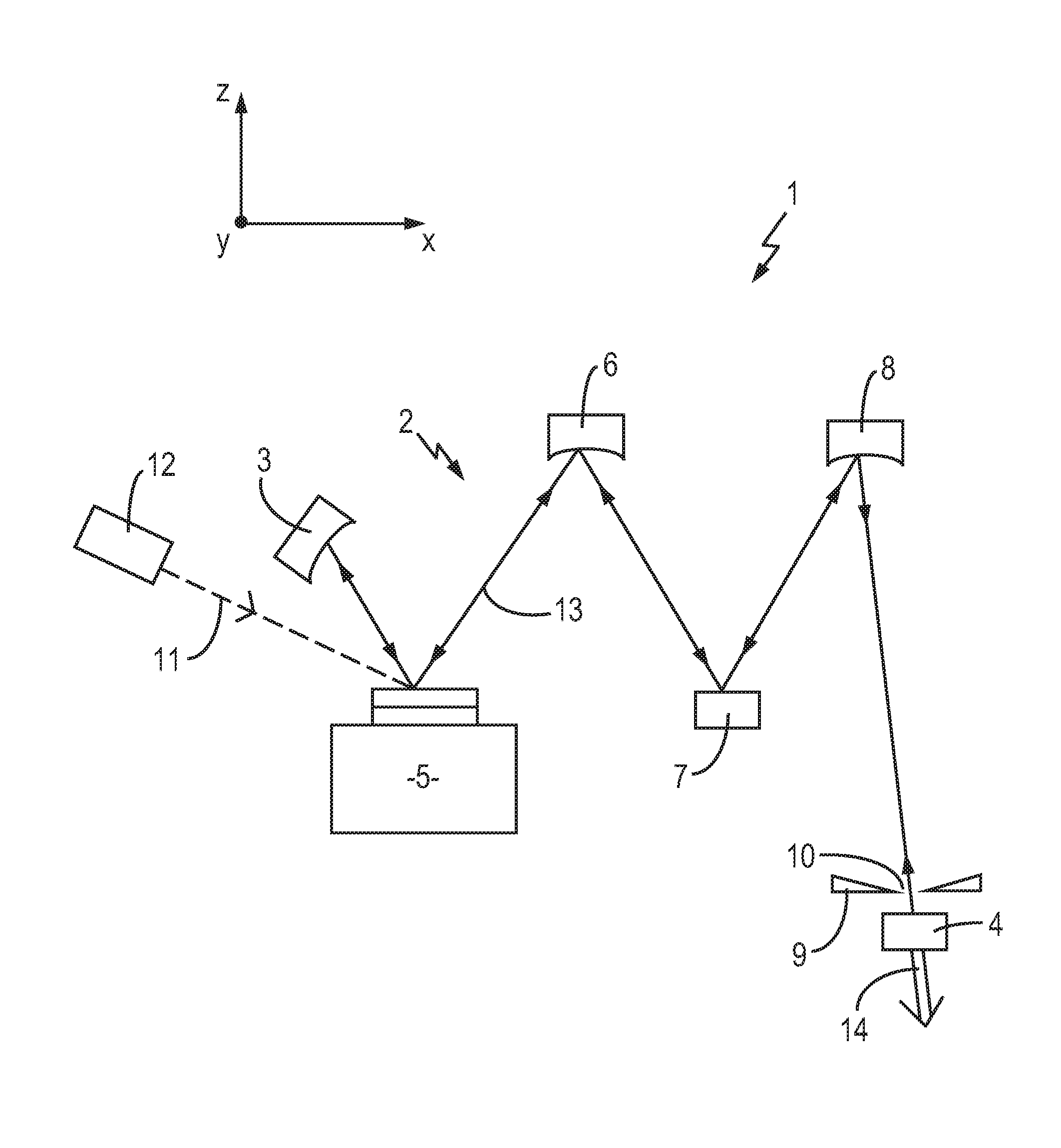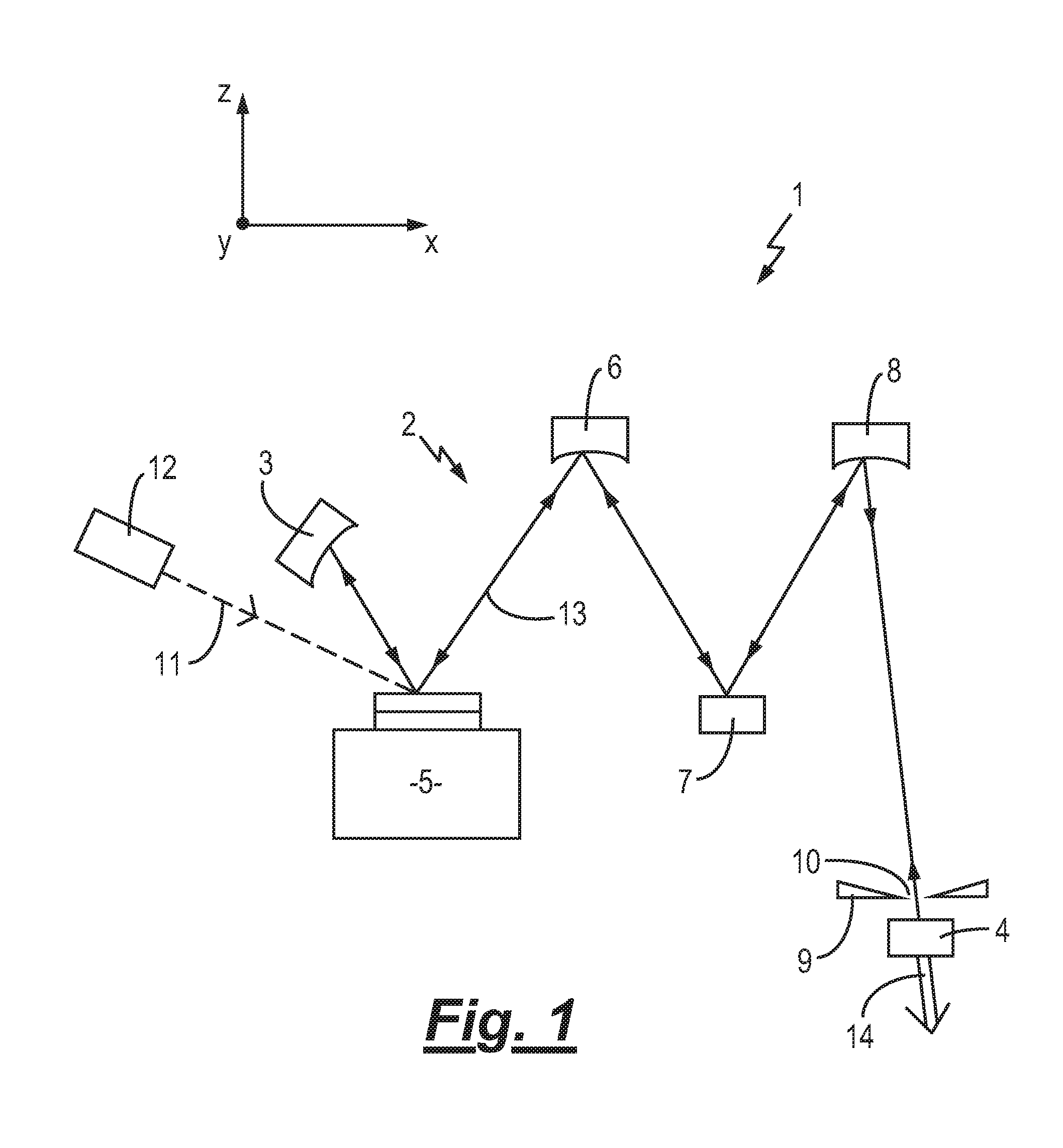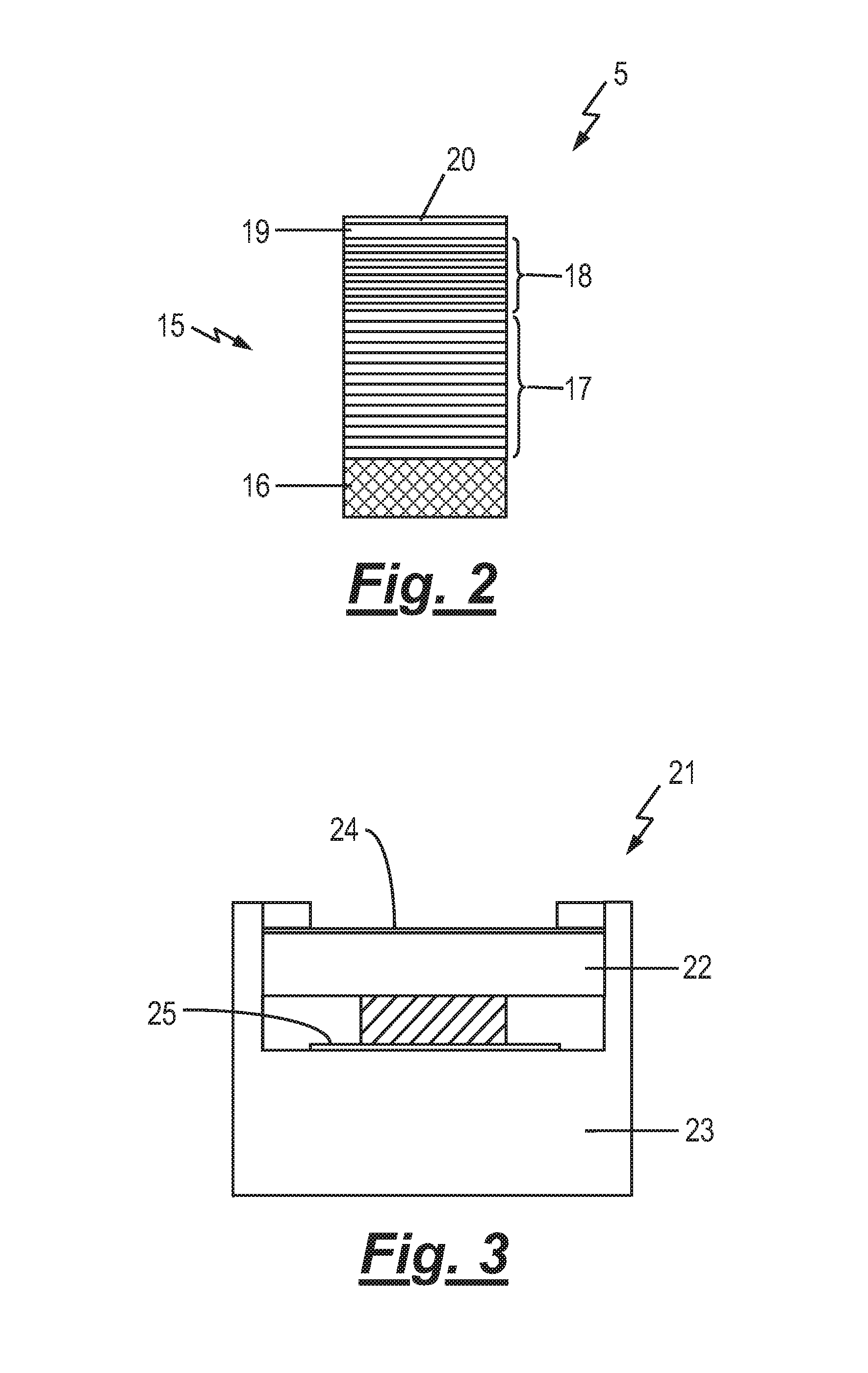Self mode-locking semiconductor disk laser
- Summary
- Abstract
- Description
- Claims
- Application Information
AI Technical Summary
Benefits of technology
Problems solved by technology
Method used
Image
Examples
Embodiment Construction
[0077]Referring initially to FIG. 1, a schematic representation of a self mode-locking, external-cavity surface-emitting, semiconductor laser 1 in accordance with an embodiment of the present invention is shown. For clarity of understanding axes are provided within this figure. The plane of the cavity referred to below is the plane defined by the x and z axes.
[0078]The self mode-locking laser 1 can be seen to comprise a laser-resonator 2 formed between a first 3 and a second mirror 4 and includes a multilayer, optically-pumped, semiconductor disk laser (SDL) 5 further details of which are provided below with reference to FIGS. 2 and 3. As can be seen the SDL 5 is arranged to function as a first folding mirror for the resonator 2. Three further folding mirrors 6, 7 and 8 are included within the resonator 2 and so the resonator 2 can be considered to be a four times folded resonator.
[0079]The first mirror 3 and the three folding mirrors 6, 7 and 8 are arranged to be highly reflective ...
PUM
 Login to View More
Login to View More Abstract
Description
Claims
Application Information
 Login to View More
Login to View More - R&D
- Intellectual Property
- Life Sciences
- Materials
- Tech Scout
- Unparalleled Data Quality
- Higher Quality Content
- 60% Fewer Hallucinations
Browse by: Latest US Patents, China's latest patents, Technical Efficacy Thesaurus, Application Domain, Technology Topic, Popular Technical Reports.
© 2025 PatSnap. All rights reserved.Legal|Privacy policy|Modern Slavery Act Transparency Statement|Sitemap|About US| Contact US: help@patsnap.com



